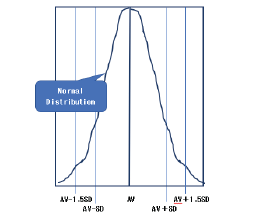Opinion 
 Creative Commons, CC-BY
Creative Commons, CC-BY
A Suggestion on How to Use CWPT “How to Evaluate the Effect of Improving Lifestyle”
*Corresponding author: Takaki Shimura, Sosei Ltd, Biomedical Research Lab, 400, Tomitsuka-cho, Naka-ku, Hamamatsu-shi, Shizuoka 432-8002, Japan.
Received:April 20, 2022; Published: April 25, 2022
DOI: 10.34297/AJBSR.2022.16.0023199
History of CWPT
Around 2003, when CWPT (Color words pick-out test) was invented to detect a slight decrease in frontal lobe function before the onset of dementia [1], the development of therapeutic agents for dementia and research on brain rehabilitation began, and CWPT did not receive any attention at that time. Many diagnostic imaging equipment such as MRI, SPECT or X-ray CT and neuropsychological tests such as MMSE or CDR were used to determine the effects of therapeutic drugs and rehabilitation after the onset of dementia.
In recent years, as the paradigm shift of dementia research to pre-dementia, MCI (Mild Cognitive Impairment) and PCSD (Preclinical Stage of Dementia), has occurred. Please refer to Figure 1 for the transition of progression to dementia. To evaluate the effects of therapeutic drugs and brain rehabilitation economic means other than PET examination have been required. CWPT is a neuro-psychological test that can meet that demand. This is because the MMSE, which has been used after the onset of dementia, has a saturated score (Figure 2). On the other hand, CWPT has a normal distribution of scores, so the slight disorder can be classified by standard deviation (Figure 3).
The evidence and validity of CKPT (Japanese version of CWPT) have been examined, and the correlation with WCST, which is known as a neuropsychological test of the frontal lobe, has been confirmed, and the sensitivity and specificity based on MMSE are close to 1[2]. In addition, diagnostic criteria by Index1 derived by CKPT (Table 1) are obtained by gender and age group using largescale data [3].
How to use CKPT
Methods
Diagnostic criteria obtained by gender and age group are used as an index to indicate the degree of vitality of the subject’s brain, but they are useful for continuous lifestyle-related checks and for judgment of the effects of brain rehabilitation. It is recommended to apply a transition map such as the flow of the river shown in Figure 4. In the figure, the vertical axis shows Index1, and the horizontal axis shows the age, and the diagnostic reference values of each age are plotted, and five lines are shown from the top, mean value + 1.5SD, mean value + SD, mean value, mean value-SD, mean value -1.5SD.
Proposal to Apply the Transition Map to Evaluate the Effect of Improving Lifestyle
Practical research using transition charts has just begun. The subjects are those aged 60 and over who are worried about developing dementia and who do not have color blindness or other disabilities in their eyes. Workshops are regularly set up to explain the guidelines for dementia prevention presented by WHO in 2019 [4] in an easy-to-understand manner and to take tests using CKPT. The arrows in Figure 4 shows the transition of Index1 year by year. Maintaining good lifestyles with the encouragement of the increase in Index 1 value is expected.
Conclusion
It is effective to use the transition chart shown here to determine the effect of dementia prevention. It will be utilized for determining the effects of individual tasks, such as exercise or blood pressure management. It can also be applied to the effect investigation of dementia preventive drugs.
Message to Readers
CWPT can be translated and applied to any national language, so we are looking for people who wish to translate and apply it to their native language. An English version is already available [5], so please email me if you would like to try it.
References
- Takaki Shimura, et al. (2003) Japan Patent No. 4887720.
- Takaki Shimura, Eriko Okuyama, Hironori Ohsugi (2019) CWPT (Color Words Pick-out Test) Available for Classifying the Slight Disorder on the Preclinical Stage of Dementia. HSOA Journal of Alzheimer’s and Neurodegenerative Diseases 5(2): 100028.
- Takaki Shimura, Eriko Okuyama, Hironori Ohsugi (2020) Derivation of Diagnostic Criteria for a slight cognitive Impairment using CKPT (Japanese Version of CWPT). HSOA Journal of Alzheimer’s and Neurodegenerative Diseases 6(3): 100046.
- Takaki Shimura, Eriko Okuyama, Keiko Togami Evans (2020) English Version of CWPT (Color Words Pick-out Test). Archives in Neurology & Neuroscience 8(4).








 We use cookies to ensure you get the best experience on our website.
We use cookies to ensure you get the best experience on our website.